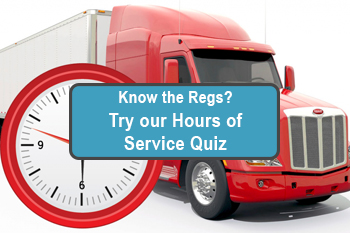
Pending Regulatory and Legislative Actions as of October 2017 from the ATA
posted in Alerts by Brian Gray
Pending Regulatory and Legislative Actions as of October 2017 from the ATA
HOURS OF SERVICE (HOS):
In December 2014, Congress suspended the 34-hour restart restrictions in place since July 2013. Under the law, the suspension was to expire when the Federal Motor Carrier Safety Administration (FMCSA) reported to Congress the results of its mandated research evaluating the safety impacts of the 34-hour restart restriction.
In December, 2016, President Obama signed a continuing resolution which included language to preserve the simple restart (without the restrictions) indefinitely, provided the FMCSA 34-hour restart study doesn’t prove the restrictions improve safety.
In early March 2017, FMCSA released the Hours of Service Restart study report which, as expected, indicated that the restrictions do not improve safety, preserving the simple restart permanently.
In early June 2017, FMCSA published a proposal to establish a pilot study to determine whether or not providing additional flexibility to the sleeper berth rules would improve safety. Researchers should begin recruiting drivers for participation in the study sometime this fall.
The Latest: In early July 2017, FMCSA issued a new interpretation of the agricultural operations exception to the HOS rules. Now, any time an agriculture hauler spends within the 150 air mile radius(AMR) is not be counted toward HOS limits. The HOS starts when the driver leaves the AMR. Previously, when the AMR was breached the driver was required to create logs accounting for time spent inside the AMR. The exception can be used during Statedeclared planting and harvest seasons and can only be used when hauling specific agricultural commodities.
ELECTRONIC LOGGING DEVICES (ELDs):
In December 2015, FMCSA published the Final Rule which requires all subject drivers to adopt ELDs meeting new specifications by December 18, 2017. Those who were voluntarily using devices meeting automatic onboard record device (AOBRD) specifications will have until December 18, 2019 to upgrade their devices.


In late March 2017, FMCSA asked for comment on a request for exemption from the ELD rule for drivers using short term rental CMVs (30 days or less). Outreach efforts on the part of FMCSA and ATA have been ongoing.
In July 2017, Cong. Brian Babin (R-TX) introduced a bill that would delay implementation for 2 years. Neither bill is expected to garner enough support to delay the ELD implementation deadline.
The Latest: In early September 2017, the House defeated an amendment to the transportation appropriations bill that would have delayed ELD implementation for one year. The amendment was defeated 173 to 246 in a bipartisan vote.
In early October, FMCSA issued a partial exemption to the ELD rule allowing drivers operating short-term rental vehicles (30 days or less) to track their hours of service compliance using paper logs for up to eight days. To claim the exemption, drivers must produce a copy of the rental agreement and a copy of the federal register notice announcing the exemption if asked by roadside enforcement.
COMPLIANCE, SAFETY, ACCOUNTABILITY (CSA):
CSA is designed to identify potentially unsafe motor carriers. ATA, however, has serious concerns with the program’s ability to do so accurately and reliably. Many of these concerns were validated by a GAO investigation published in early 2014 that identified significant shortcomings in the ability of CSA to accurately predict crash risk for individual motor carriers.
On January 15, 2016, FMCSA issued its proposal to use data from CSA, in addition to information gathered during on-site compliance reviews, to make Safety Fitness Determinations (SFD) (i.e. safety ratings) on a monthly basis. FMCSA later withdrew the proposal citing industry concerns.
In early July 2017, FMCSA announced a planned demonstration project, based on ATA suggestions, to consider requests from motor carriers to remove non-preventable crashes from their CSA records. ATA commented in general support, raising concerns about program specifics. In late June, the National Academies of Sciences (NAS) released its Congressionally required report on CSA. While they concluded the CSA as it stands is “structured in a reasonable way” and “defensible” it did highlight shortcomings in the system including data quality and sufficiency and recommended FMCSA adopt a new statistical model to measure motor carrier safety, along with five other recommendations.
On August 1, 2017, FMCSA began accepting DataQ requests from motor carriers seeking to have crashes meeting certain criteria marked non-preventable in their CSA profile.
The Latest: In late September 2017, ATA submitted its comments to FMCSA on the NAS recommendations. In their comments, ATA withheld judgement or endorsement of the new recommended model until it can review and analyze the scores it produces. ATA also highlighted the shortcomings of the current CSA methodology and encouraged FMCSA to address them as it develops its corrective action plan, due to congress by December 4.
OBSTRUCTIVE SLEEP APNEA:
Obstructive sleep apnea (OSA) is a sleep disorder that can result in excessive daytime sleepiness and an elevated crash risk. In 2013, Congress passed legislation, supported by ATA, prohibiting FMCSA from issuing regulatory guidance on OSA.
Instead, Congress stipulated that FMCSA must use the formal notice-and-comment rulemaking process to address the issue.
In March 2016, FMCSA published an Advance Notice of Proposed Rulemaking (ANPRM) seeking feedback on the prevalence of OSA in the industry as well as appropriate screening, testing and treatment of the disorder.
In early August 2017, FMCSA formally withdrew the ANPRM addressing OSA. In the notice, FMCSA stated that while OSA remains an on-going concern, they believe that the current safety programs addressing fatigue risk management are the appropriate avenues to address OSA.
The Latest: In late September 2017, Democrat members in both the house and senate introduced legislation that would require FMCSA to complete a rulemaking requiring screening, testing and treatment of OSA for truck drivers and train operators. Both bills were referred to committee and are not expected to have much momentum.
AUTOMATED TRUCKS:
On July 27th, the House Energy & Commerce Committee approved legislation that would provide federal preemption protection from state laws related to the performance of automated vehicles, but which did not apply to commercial vehicles.
The legislation also would require manufacturers of automated vehicles to submit Safety Assessment Letters to NHTSA in accordance with the September 2016 Federal Automated Vehicle Policy (FAVP) or any subsequent update that was issued as voluntary guidance, until such time that the agency issues a final rule for Safety Assessment Certifications.
On September 12th , NHTSA released new Guidance for Automated Driving Systems to replace the September 2016 FAVP. The Senate Commerce Committee passed its own version of an automated vehicles bill on October 4th , which, like the House bill, would not apply to commercial motor vehicles.
ATA President Chris Spear testified at a September 13th Senate Commerce Committee hearing on Transportation Innovation: Automated Trucks and our Nation’s Highways, highlighting the potential safety benefits of automated trucks, dispelling myths of immediate massive truck driving job loss from automation, and calling on Congress to include trucks, in addition to passenger cars, in the Senate legislation. ATA would like to see the same preemption protection provided to commercial vehicles that these bills provide to passenger vehicles.
The Latest: The Senate Commerce Committee held a mark-up of their Automated Vehicles legislation on October 4th . An amendment offered during mark-up by Senator Inhoffe (R-OK) to include commercial vehicles in the legislation did not have sufficient support to pass, and was withdrawn. The Senate bill was passed out of the Commerce Committee on a voice vote and now awaits a floor vote, where amendments could again be offered.







